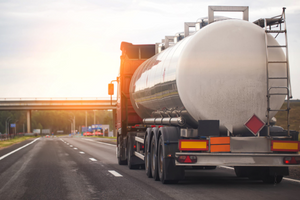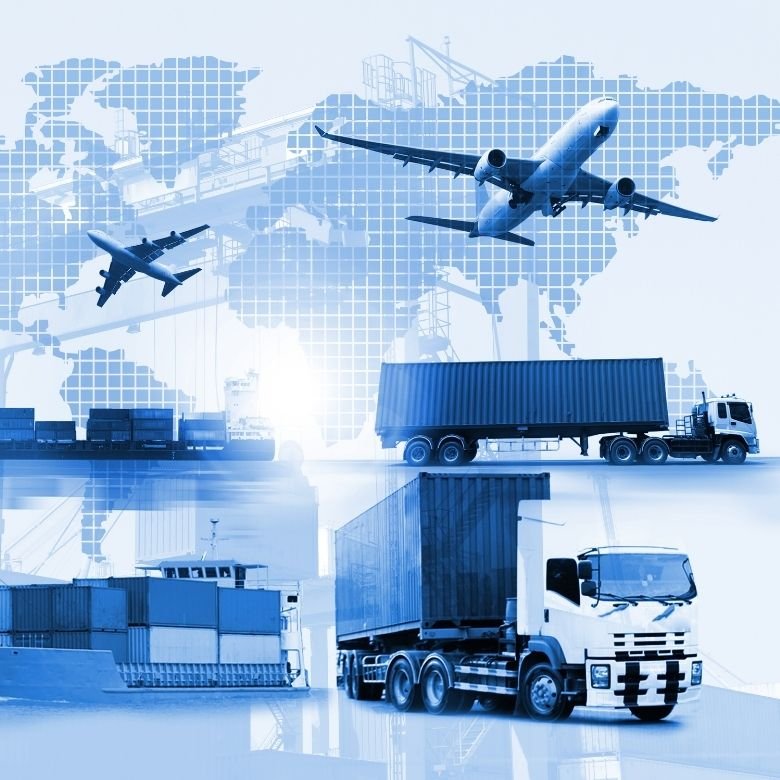Given the enormous diversification of raw materials and finished products as well as specific legal requirements, the cosmetics and detergent industry presents a huge challenge for the transport and logistics sector. Well-organized logistics and transport processes currently require service providers to have specialized equipment, legislative knowledge in the field of chemical transport, knowledge of national and international transport regulations, as well as ensuring very good organization of transport.

Transportation of cosmetics and detergents
Both in the cosmetics industry and in the detergent industry, the key aspect is the appropriate selection of transport equipment, and in particular its proper preparation. Finished products and raw materials needed for their production require special conditions during transport. During transport, it is extremely important, for example, to ensure cleanliness, appropriate temperature, or to prevent leakage of chemicals.
The logistics area includes as a standard, in the supply management aspect, production and warehouse logistics as well as distribution of finished products. Each of these elements differs from the others not only in terms of specificity and properties of the transported materials, but also requires special infrastructure and equipment.
In case of supply we usually deal with raw materials and semi-finished products, which are most often transported in bulk. An aspect of great importance is that most of the range of raw materials for the production of cosmetics and detergents is in liquid form. Therefore, it is necessary to transport them in special cisterns and tank-containers, which are perfect for intermodal transport.
Logistics in the transport of hazardous substances/materials
The important thing is that many of the ingredients used, especially in the production of strong detergents, are classified as hazardous substances. These types of chemical products are subject to strict transport safety regulations. The transport of such substances requires special ADR / RID marking in the form of special warning pictograms concerning hazards in road transport (ADR) and rail transport (RID).
Substances classified as hazardous due to their chemical, physical and biological properties pose a threat to the environment and human health. Hence the importance of proper transport technology in their case. It should be selected in such a way as to minimize the risks that occur during transport. It is for this reason that, for example, railway routes usually run far away from urban agglomerations and public roads. As a result, the inclusion of rail transport in the logistics process significantly increases the safety of transporting chemicals, especially over long distances. In addition, rail transport significantly reduces transport costs and facilitates the transport planning process. What is more, it has a positive effect on the environment as it allows for a significant reduction in CO2 emissions to the atmosphere.
Logistics in the area of the production process
When considering logistics in the area of the production process, we deal with the circulation of raw materials, i.e. substances constituting raw materials, semi-finished products and additives that are part of finished products. They can be intended both for further processing by industry and ultimately reach end consumers.
The quality of raw materials is of great importance both in the production of cosmetics and detergents as finished products, as well as their ingredients, e.g. surfactants. Securing quality and maintaining it during transport is a huge logistical challenge for each link in the supply chain.
The above-mentioned raw materials include, for example, alcohols and fatty acids, glycerin, surfactants, oils, monochloroacetic acid (MCAA), caustic soda / soda lye, ethylene oxide, propylene oxide and many other chemicals.
The basic ingredients of cosmetic or detergent formulations are usually transported in industrial quantities. In this case, the transport usually takes place in cisterns and tank-containers with a capacity of 24-35 thousand litres. The unit weight of such transport is up to 27 tons of the product itself. It should be mentioned that different substances have different shipping guidelines. This applies, for example, to the temperature, the material from which the transport tanks are made, or the cleanliness class of the tank.

Conditions necessary for the transport of chemicals
In the case of cosmetic ingredients, an extremely important issue is the cleanliness of the transport tanks. Before unloading, each transported batch of the product undergoes a number of qualitative analyses, including microbiological tests. Their purpose is to confirm that a given raw material does not contain any microorganisms harmful to human life and health.
With regard to cosmetic raw materials and detergent ingredients, temperature control during transport is most often dictated by their physico-chemical properties. In most cases, this issue is related to the freezing point of the substance. Below or above the optimum freezing point, a substance may change from liquid to solid and vice versa.
This is a particularly undesirable phenomenon when a given raw material changes its state of aggregation from liquid to solid. The occurrence of this process makes the unloading of products transported in tanks much more difficult. We often deal with such a situation when unloading liquid chemical raw materials in conditions of lower air temperatures in the winter months.
Chemical raw materials sensitive to low temperatures are transported in special tanks equipped with a heating system or an installation that allows for connecting an external heat source (steam, hot water, electricity). The product in the tank is heated to the appropriate temperature immediately before unloading. Therefore, it is quite a challenge to shorten the transport time as much as possible and to properly prepare transport equipment for a given product in order to limit the change of its state of aggregation.
It should also not be forgotten that a large part of the transported raw materials is classified as hazardous substances. Therefore, they require transport taking into account the elements resulting from legal restrictions, as well as additional requirements imposed on this type of transport by relevant international conventions.
In the case of the detergents and cosmetics industry, the dominant hazard classes according to ADR / RID are classes 3, 8 and 9. Substances classified in these hazard classes must be transported in specially marked units. These designations relate, for example, to the product group, the type of hazard. They also contain the substance identification number, in accordance with the ADR / RID or IMDG lists.
Choosing a provider of logistics and transport services
The number of regulations related to the transport of hazardous substances, combined with numerous cross-border regulations, causes many logistic problems for producers in the area of organizing the supply of raw materials and products to customers. Therefore, they often use the offer of specialized logistics companies that provide comprehensive services in the organization of deliveries and the preparation of documentation for both import and export.
When choosing a supplier of logistics and transport services, it is necessary to verify whether the supplier is assessed according to the SQAS (Safety & Quality Assessment for Sustainability) system. It is a reliable assessment system that covers a wide range of quality, safety, security, environmental and CSR (corporate social responsibility) requirements. The SQAS assessment report enables chemical manufacturers to assess their logistics service providers against strict industry requirements.
